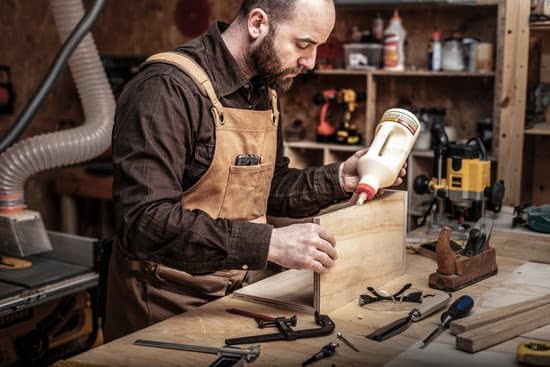Toggle clamps are an essential tool in woodworking, providing a secure and reliable way to hold workpieces in place during various stages of a project. In this article, we will explore the ins and outs of toggle clamps and how they can be effectively utilized in woodworking. Whether you’re a seasoned woodworker or just starting out, understanding the basics of toggle clamps is crucial for improving accuracy and efficiency in your projects.
Toggle clamps come in different types, each with its own unique features and uses in woodworking. From vertical handle and horizontal handle toggle clamps to push-pull and latch action toggle clamps, there’s a wide range of options to choose from based on specific project requirements. We’ll delve into each type of toggle clamp and discuss their respective applications, giving you the knowledge needed to select the right one for your woodworking needs.
Once you’ve chosen the appropriate toggle clamp for your project, it’s essential to know how to install and set it up correctly in your woodworking workshop. We will provide a step-by-step guide on proper installation, as well as tips and tricks for using toggle clamps effectively to enhance accuracy and efficiency. Additionally, we’ll cover common mistakes to avoid when using toggle clamps in woodworking and offer creative ideas for incorporating them into unique projects.
And lastly, we’ll address safety precautions and best practices to ensure a safe working environment while using toggle clamps. Stay tuned as we uncover how to harness the power of toggle clamps to elevate your woodworking skills.
The Different Types of Toggle Clamps and Their Uses in Woodworking Projects
Toggle clamps are an essential tool in woodworking, providing woodworkers with a secure and reliable way to hold their workpieces in place during various tasks. There are several types of toggle clamps available, each with its own unique features and uses in woodworking projects.
One common type of toggle clamp is the horizontal handle toggle clamp, which is designed for applications where the operator needs to hold the material down horizontally. This type of clamp is often used for tasks such as holding down jigs and fixtures or securing workpieces while performing cutting or drilling operations.
The vertical handle toggle clamp, on the other hand, is ideal for applications where the material needs to be held down vertically. This type of clamp is commonly used in tasks such as holding together miter joints or securing pieces while gluing.
Another popular type of toggle clamp is the push-pull toggle clamp, which allows for fast and easy clamping action. These clamps are commonly used in applications where the user needs to quickly position and secure a workpiece, such as when assembling frames or casework.
| Toggle Clamp Type | Common Uses |
|---|---|
| Horizontal Handle Toggle Clamp | Securing workpieces while performing cutting or drilling operations |
| Vertical Handle Toggle Clamp | Holding together miter joints or securing pieces while gluing |
| Push-Pull Toggle Clamp | Assembling frames or casework |
Choosing the Right Toggle Clamp for Your Specific Woodworking Needs
Toggle clamps are essential tools in woodworking, providing a secure means of holding workpieces in place while you drill, saw, route, or sand. However, with the numerous types of toggle clamps available on the market, choosing the right one for your specific woodworking needs can be overwhelming. Here are some tips to help you make an informed decision:
- Consider the type of project: Different woodworking projects require different types of toggle clamps. For example, if you are working on a project that requires horizontal pressure, a horizontal handle toggle clamp would be ideal. On the other hand, vertical handle toggle clamps are more suitable for projects that need vertical pressure.
- Check the holding capacity: Toggle clamps come in various sizes and holding capacities. It is important to consider the size and weight of your workpiece to ensure that the toggle clamp you choose can securely hold it in place without any issues.
- Evaluate the space in your workshop: The space available in your woodworking workshop will also play a role in determining the type and size of toggle clamps you can use. If you have limited space, compact toggle clamps might be more suitable for your needs.
By carefully considering these factors, you can select the right toggle clamp that suits your specific woodworking requirements.
Remember that having a variety of toggle clamps at your disposal can also provide versatility and convenience when working on different woodworking projects. As such, it may be beneficial to invest in a few different types and sizes of toggle clamps to cover a wide range of applications within your woodworking practice.
Ultimately, understanding how to choose the right toggle clamp for your specific woodworking needs will greatly impact the success and efficiency of your projects. With careful consideration and selection, you will be able to harness the power of toggle clamps to elevate your woodworking skills and achieve superior results.
Step-by-Step Guide on How to Properly Install and Set Up Toggle Clamps in Your Woodworking Workshop
Toggle clamps are an essential tool in any woodworking workshop, providing a quick and efficient way to secure workpieces in place. In this section, we will provide a step-by-step guide on how to properly install and set up toggle clamps in your woodworking workshop.
Choose the Right Location
The first step in setting up toggle clamps in your workshop is to choose the right location for them. Consider the specific woodworking tasks you will be using the clamps for and ensure that they are installed in a convenient and accessible position.
Install the Clamps
Once you have determined the best location for your toggle clamps, it’s time to install them. Use a drill to create pilot holes for the mounting screws, then securely attach the clamps to your workbench or table. Make sure that they are firmly anchored and will not shift during use.
Adjust and Test
After installing the toggle clamps, take the time to adjust them to fit the size of your workpieces. Most toggle clamps allow for some degree of adjustment, so experiment with different settings until you find the perfect fit. Once adjusted, test the clamps by securing various sized pieces of wood to ensure they hold securely.
By following these steps, you can effectively integrate toggle clamps into your woodworking workflow and take advantage of their benefits for improved accuracy and efficiency in your projects. Whether you are working on small-scale craft projects or larger furniture pieces, mastering the use of toggle clamps can elevate your woodworking skills and enhance the quality of your finished products.
Tips and Tricks for Using Toggle Clamps to Improve Woodworking Accuracy and Efficiency
Toggle clamps are an essential tool in any woodworking workshop, providing the necessary support and stability for various projects. Here are some tips and tricks for using toggle clamps to improve woodworking accuracy and efficiency:
1. Proper positioning: When using toggle clamps, it’s crucial to ensure that they are positioned correctly to exert the right amount of pressure on the workpiece. Placing the clamp too far from the edge may cause instability, while positioning it too close may not provide sufficient grip. Always test the position before securing it in place.
2. Utilize multiple clamps: For larger or more complex woodworking projects, using multiple toggle clamps can greatly improve accuracy and efficiency. By distributing the clamping force across different points of the workpiece, you can minimize the risk of movement or slippage during cutting, drilling, or sanding.
3. Maintenance and inspection: Regularly inspecting and maintaining your toggle clamps is essential for their proper function. Ensure that the mechanisms are clean and free from sawdust or debris that could affect their performance. Additionally, check for any signs of wear or damage in the rubber pads or grips and replace them as needed.
Remember that these tips and tricks are just a starting point for incorporating toggle clamps into your woodworking projects. As you gain experience, you’ll discover even more ways to enhance accuracy and efficiency using these versatile tools. Whether you’re working on simple tasks like holding pieces steady during cutting or tackling more complex projects requiring precise alignment, mastering the use of toggle clamps will undoubtedly elevate your woodworking skills.
Common Mistakes to Avoid When Using Toggle Clamps in Woodworking
When using toggle clamps in woodworking, it is important to be aware of common mistakes that can compromise the quality and safety of your projects. One common mistake is failing to properly position the clamp before use. This can result in an unstable hold and potential slippage, leading to inaccuracies in your work. It’s crucial to take the time to ensure that the clamp is securely positioned before applying pressure.
Another mistake to avoid is over-tightening the toggle clamp. While it may seem like a tighter grip would provide better stability, over-tightening can actually damage both the clamp and your workpiece. It’s essential to find the right balance between securing the piece firmly and avoiding unnecessary pressure.
Additionally, failing to regularly check and maintain your toggle clamps can lead to issues during woodworking projects. Dust, debris, and wear and tear can all affect the performance of these tools. Taking the time for regular cleaning and maintenance will ensure that your toggle clamps remain in optimal working condition.
| Common Mistake | Impact |
|---|---|
| Failing to properly position the clamp | Unstable hold, potential slippage, inaccuracies in work |
| Over-tightening the toggle clamp | Potential damage to clamp and workpiece |
| Failing to regularly check and maintain toggle clamps | Issues during woodworking projects due to dust, debris, wear and tear |
Creative Ways to Incorporate Toggle Clamps Into Unique Woodworking Projects
Custom Jigs and Fixtures
One creative way to incorporate toggle clamps into unique woodworking projects is by building custom jigs and fixtures. These can be specifically tailored to hold irregularly shaped pieces or securely fasten delicate materials in place.
By strategically placing toggle clamps on these custom jigs, woodworkers can ensure the stability and accuracy needed for their one-of-a-kind creations. Whether it’s a curved piece of wood or an intricate joint, toggle clamps can provide the necessary support for successful woodworking projects.
Complex Gluing and Assembly
Another innovative use of toggle clamps in unique woodworking projects is for complex gluing and assembly tasks. When working on projects that require precise alignment and pressure during glue-ups or assembly, toggle clamps can be employed to hold everything in place while the adhesive sets. This method allows woodworkers to tackle challenging designs and builds with confidence, knowing that the components are securely held together by the adjustable force of the toggle clamps.
Specialized Workholding Solutions
Lastly, incorporating toggle clamps into specialized workholding solutions can open up a world of creative possibilities for woodworking enthusiasts. From creating angled work surfaces to securing oddly shaped workpieces, toggle clamps offer a versatile solution for holding materials in place during intricate woodworking processes. Woodworkers can explore unconventional designs and push the boundaries of traditional techniques by harnessing the adaptability and strength of toggle clamps in their unique woodworking projects.
By understanding how to use toggle clamps effectively in these creative ways, woodworkers can elevate their craftsmanship and overcome design challenges that may have seemed daunting before. With some ingenuity and strategic application, toggle clamps can become invaluable tools for bringing unique woodworking ideas to life.
Safety Precautions and Best Practices When Using Toggle Clamps in Woodworking
Toggle clamps are a versatile tool that can greatly improve the accuracy and efficiency of woodworking projects. However, it is crucial to prioritize safety when using toggle clamps in your workshop. By following some best practices and taking necessary precautions, you can ensure a safe and productive woodworking experience.
First and foremost, always wear appropriate safety gear when working with toggle clamps. This includes eye protection to guard against any potential flying debris, as well as ear protection if you are working with loud machinery. Additionally, it is important to keep your work area clean and free of any obstacles that may interfere with the operation of the toggle clamps.
When using toggle clamps, make sure to inspect them regularly for any signs of damage or wear. It is essential to keep them in good condition to prevent any accidents or mishaps during use. Furthermore, always use the right size and type of toggle clamp for the specific task at hand. Using an improper clamp can lead to instability and potential safety hazards.
Lastly, be mindful of where you position your hands when using toggle clamps. Avoid placing them near moving parts or potential pinch points to prevent injuries. Always follow manufacturer’s guidelines for proper use and maintenance of toggle clamps to ensure safe and effective woodworking practices.
By implementing these safety precautions and best practices, you can confidently harness the power of toggle clamps in your woodworking projects while prioritizing a safe working environment for yourself and others in your workshop.
Conclusion
In conclusion, toggle clamps are an essential tool for any woodworker looking to improve accuracy, efficiency, and safety in their projects. Understanding the different types of toggle clamps and choosing the right one for your specific needs can make a significant difference in the quality of your work. By following a step-by-step guide on how to properly install and set up toggle clamps in your woodworking workshop, you can ensure that they are used to their full potential.
Tips and tricks for using toggle clamps include maximizing their potential by creatively incorporating them into unique woodworking projects. By doing so, you can take advantage of the versatility of toggle clamps and explore new innovative ways to improve your woodworking skills. It is also important to be aware of common mistakes when using toggle clamps in woodworking, as well as safety precautions and best practices to ensure a safe and productive working environment.
Ultimately, mastering how to use toggle clamps in woodworking can greatly elevate your skills and contribute to the overall quality of your work. Whether you are a beginner or an experienced woodworker, taking advantage of the power of toggle clamps can lead to precision, efficiency, and creativity in all of your woodworking endeavors.
Frequently Asked Questions
How Do You Use Toggle Clamps?
Toggle clamps are commonly used in woodworking, metalworking, and other manufacturing processes to hold down workpieces securely. They typically consist of a handle to operate the clamp, a linkage system, and a clamping arm.
To use a toggle clamp, you would first position the workpiece, then engage the handle to lower the clamping arm onto the workpiece until it’s securely held in place. The design of the toggle clamp allows for quick and easy clamping and releasing of workpieces.
Do You Apply Pressure on Panel During Toggle Clamping?
Yes, pressure is applied on the panel during toggle clamping. When using a toggle clamp, pressure is exerted on the workpiece by lowering the clamping arm onto it.
This pressure is what holds the workpiece securely in place while you perform your machining or assembly tasks. It’s important to ensure that the pressure applied by the toggle clamp is sufficient for the specific requirements of your project.
What Are the Disadvantages of Toggle Clamps?
While toggle clamps have many advantages such as quick operation and secure holding power, there are also some disadvantages to consider. One disadvantage is that they may not be suitable for very heavy or oversized workpieces due to their limited capacity. Additionally, over-tightening a toggle clamp can potentially damage delicate or thin materials.
Another disadvantage is that some designs may not provide even pressure distribution across larger surfaces, leading to potential warping or distortion of workpieces during clamping. Lastly, if not properly maintained or used incorrectly, toggle clamps can wear out over time and lose their effectiveness.

Hi everyone! I’m a woodworker and blogger, and this is my woodworking blog. In my blog, I share tips and tricks for woodworkers of all skill levels, as well as project ideas that you can try yourself.





